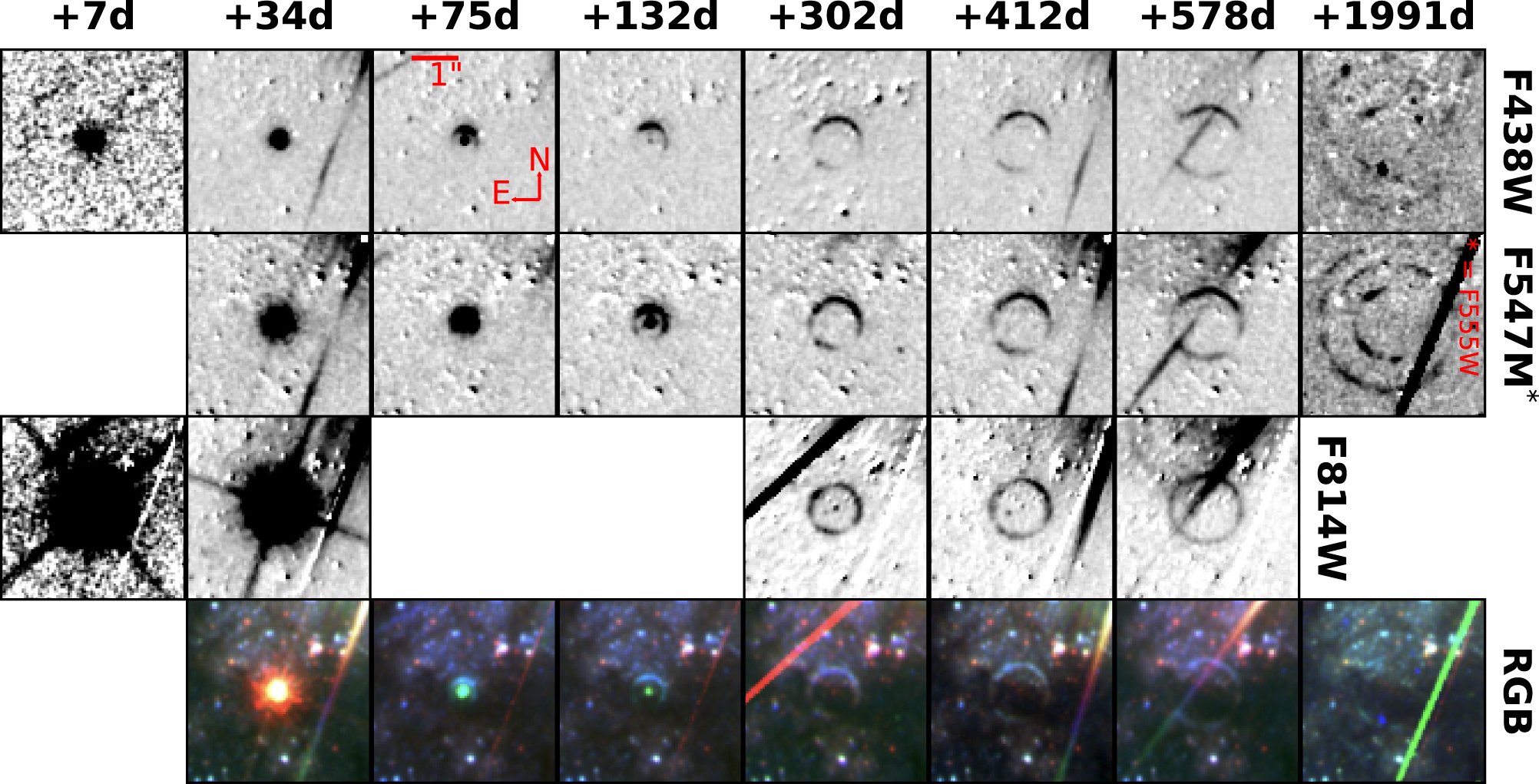Scientific Highlight - May
Title: Light Echoes: A Stellar Light Show captured by the Hubble Space Telescope
![[Translate to English:] Scientific highlight - May 2023](/fileadmin/site_files/nyheder/scientifichighlight_maj2023.png)

Just like throwing a pebble into a pond creates a mesmerizing pattern of ripples, light from a bright star or supernova reflecting off dense sheets of dust in space creates rings of light called light echoes! Although rarely captured, light echoes are an interesting area of research as they tell us a lot about mechanisms involved in the formation and evolution of stars, and galaxies.
A paper published in the Astrophysical Journal Letters by Astronomer Maximilian D. Stritzinger et al. from Aarhus University studied light echoes associated with a supernova (an exploding star). They created a sequence of the Hubble Space Telescope images documenting the emergence and evolution of multiple light echoes associated with supernova (SN) 2016adj, located in the iconic dust lane contained within the nearby and most studied galaxy to date known as Centaurus A. These images are of high angular resolution and span over 1,900 days, which is a much longer timescale than previous observations of light echoes.
Light echoes can be used to study the properties of the objects that produce them, such as their distance from Earth, as well as information on the dust sheets spawning the light echoes such as their foreground distance from the supernova, thickness, and geometry. A famous example of a light echo is the one observed around the star V838 Monocerotis in 2002. The light echo revealed that the star had undergone a dramatic outburst, possibly caused by a collision with another star or a planet.
In this study, researchers analyzed the data from the Hubble images and determined the origin of the light echoes produced from SN light scattering off of complex dust sheets located in the surrounds of the supernova. As the light from the supernova travels through space, it encounters these dust sheets and gets scattered in different directions, producing a delayed and distorted image of the original supernova. By measuring the angular radii, colour, and optical depth of the scattering surfaces, the researchers have been able to construct a scenario with multiple sheets of clumpy dust characterized by varying degrees of holes. This suggests a scenario where the dust sheets surrounding SN 2016adj follow a structure reminiscent of a chunk of Swiss cheese.
Furthermore, this study has identified the earliest light echo emission associated with a supernova at only 34 days past the moment when the supernova reached peaked brightness or two months past explosion. This is significant because it provides insight into the early stages of light echo formation!
So, next time you skip a stone in a pond, remember that even the universe has its own version of ripples - and they're helping us uncover some pretty amazing things!
Read the full article here in Astrophysical Journal Letters.
Image text for the picture in the middle:
A montage of Hubble Space Telescope images of supernova 2016adj extending +7 days to +1991 days after the epoch of peak brightness. The top three rows display images obtained with distinct filters and reveal the emergence and evolution of multiple light echoes. Corresponding RGB composite images are presented in the bottom row. The first light echo appears as a half-ring and is visually apparent on +75 days and continues to radially expand through +1991 days. The most recent images also reveal portions of three additional light echo rings.
